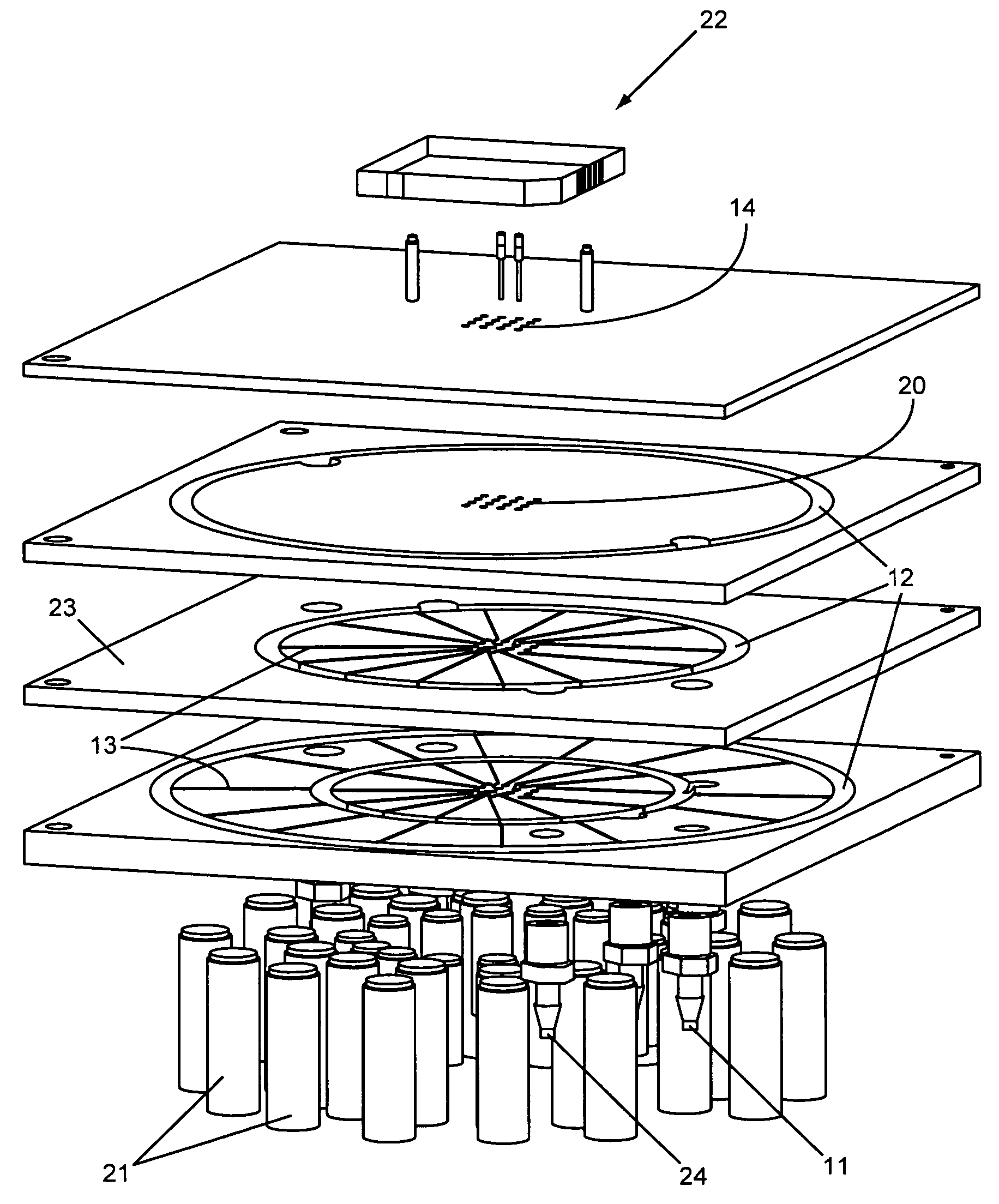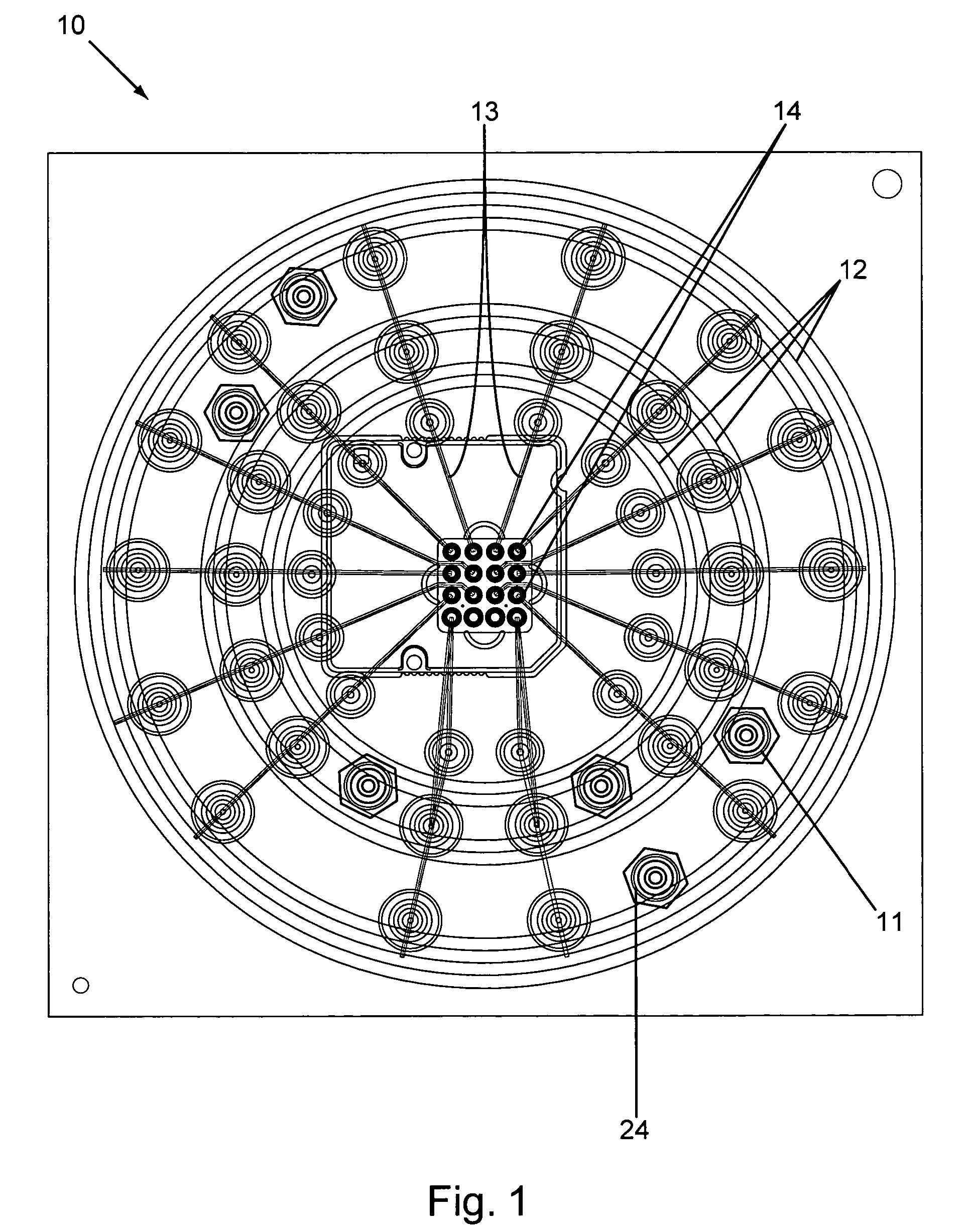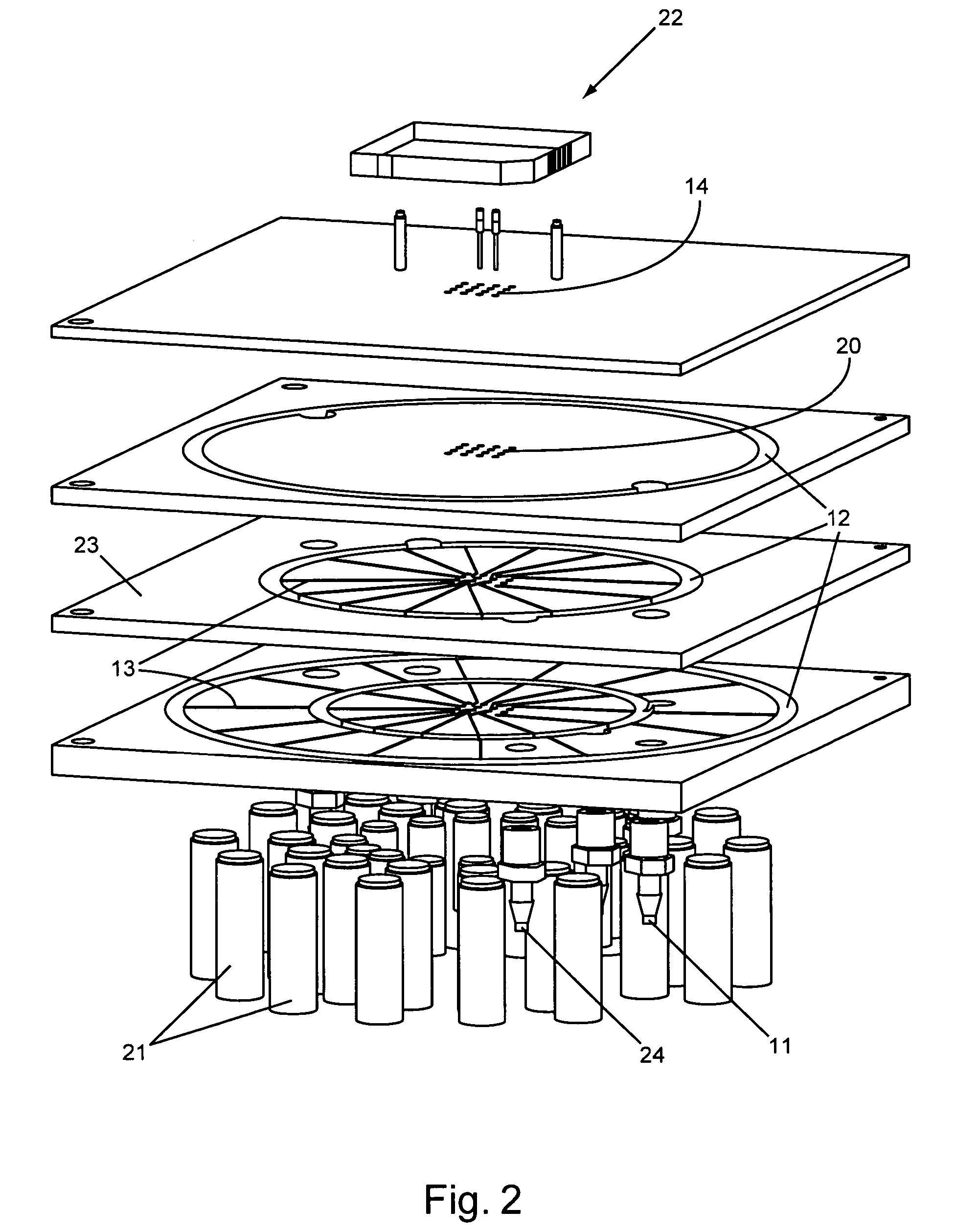Methods and systems for processing microscale devices for reuse
a microfluidic chip and micro-scale technology, applied in the field of systems and methods for reprocessing analytical system components for reuse, can solve the problems of high manual washing difficulty, high cost of chips and waste generation in large microfluidic assay projects, and impracticality in reusing microchips, and achieve high degree of efficiency and effect of effective flushing and washing wells
- Summary
- Abstract
- Description
- Claims
- Application Information
AI Technical Summary
Benefits of technology
Problems solved by technology
Method used
Image
Examples
example 1
A Microfluidic Cartridge Reprocessing System
[0111]In this example, a stand alone processing system includes: a personal computer interacting with air pressure controllers and solenoid valves through a digital I / O interface; pressurized reagent bottles (containers) connected to the air pressure controllers and feeding solutions to ring reservoirs of a manifold through solution supply ports and solution supply control valves; the solenoid valves controlling the flow of house pressurized air to pneumatic valves operatively mounted to the manifold; and, solutions flowing from the ring reservoirs through mesoscale channels in the manifold past open pneumatic valves to orifices arrayed on the surface of the manifold.
[0112]The manifold is mounted on a swing arm above a stage adapted to hold a microscale device in a predetermined orientation. The microscale device is a microfluidic cartridge including a RFID tag data storage module mounted in a mounting plate. After the cartridge is placed ...
example 2
Reuse of a Microscale Device
[0118]Repeated AFP analyses were run on the same sample repeatedly using the same microfluidic cartridge after washing with a processing system (washing fixture) of the invention. The AFP analysis is a liquid phase binding alpha-fetoprotein (AFP) assay involving reaction and binding on-chip of AFP to two antibodies (WA-1 and IgG) which bind to different sites of the protein. The WA-1 antibody is conjugated to a DNA molecule that carries fluorescent labels (Alexa) for the detection. The different complexes and products of the reaction are separated under the influence of an electric field in a separation channel that contains a polymeric matrix (size selective media), and appear at a detector at different times based on their mobility. A typical electropherogram of the assay in 10% serum conditions is shown in FIG. 11.
[0119]The method of the experiment is briefly outlined, as follows:[0120]1) Fill the cartridge chip on washing fixture with 1N NaOH to wash ...
PUM
| Property | Measurement | Unit |
|---|---|---|
| pressure | aaaaa | aaaaa |
| depth | aaaaa | aaaaa |
| pressure | aaaaa | aaaaa |
Abstract
Description
Claims
Application Information
 Login to View More
Login to View More - R&D
- Intellectual Property
- Life Sciences
- Materials
- Tech Scout
- Unparalleled Data Quality
- Higher Quality Content
- 60% Fewer Hallucinations
Browse by: Latest US Patents, China's latest patents, Technical Efficacy Thesaurus, Application Domain, Technology Topic, Popular Technical Reports.
© 2025 PatSnap. All rights reserved.Legal|Privacy policy|Modern Slavery Act Transparency Statement|Sitemap|About US| Contact US: help@patsnap.com



